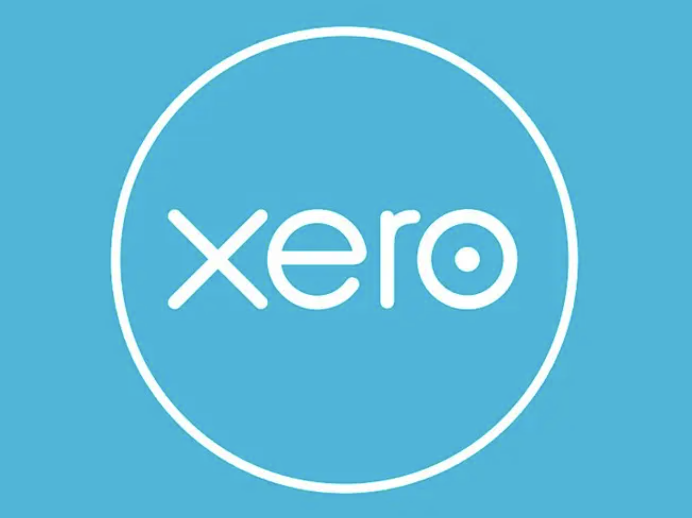
Back to hub
Blog
Sales
Gross Sales vs Net Sales: the Key Differences You Need to Know
Published on Jul 14, 2025Updated on Jul 30, 2025
Imagine that your company announces record sales, but your profits are stagnating. Why this paradox? The answer often lies in a confusion between two essential concepts: gross sales and net sales. These two indicators, although similar in appearance, reflect very different realities in accounting and business management. Gross sales paint a flattering picture of commercial performance, while net sales reveal the true profitability of sales. Understanding this distinction is fundamental for any business, from startups in the growth phase to established SMEs and large multinationals. Why? Because net sales are used to build performance analyses, cash flow forecasts, and tax assessments.

In this article, you will discover:
Clear definitions of gross and net sales
The major differences between the two
Concrete and visual examples to help you understand them better
Accounting software to use
Tips for avoiding common mistakes
What are gross sales?
Gross sales correspond to the total turnover before any deductions. They represent all of a company's sales of goods or services, without taking into account discounts, returns, or other reductions.
Simple formula:Gross sales = number of units sold × unit price
Components of gross sales:
Cash sales
Credit sales
Orders with deferred delivery
Amounts before discounts or rebates
They therefore do not reflect the net accounting reality, but rather the raw commercial strength.
Concrete example:
Let's imagine a clothing store that sells 100 shirts at $50 each.
100 × $50 = $5,000
This is the gross amount generated, before any adjustments.
Advantages
Shows gross commercial strength.
Useful for setting sales targets.
Allows you to track changes in transaction volume.
Limitations:
Does not reflect actual profitability.
Can be misleading if returns or discounts are frequent.
👉 Suggested visual: A bar chart showing “gross sales vs. returns/discounts” over a quarter.
What are net sales?
Net sales are the actual revenue received after deducting returns, trade discounts, rebates, and other applicable adjustments.
Formula:Net sales = Gross sales - (Returns + Discounts + Rebates)
Components deducted:
Merchandise returns (defective or unsatisfactory products)
Discounts and promotions (e.g., 10% off at checkout)
Discounts for prompt payment
Non-deductible VAT, if included in the gross price
Example continued:
Let's go back to the example of the store with $5,000 in gross sales:
Customer returns: 10 shirts = $500
Trade discounts: $200
→ Net sales = $5,000 - $500 - $200 = $4,300
Advantages
Provides a realistic view of income.
Reflects commercial quality (fewer returns = greater customer satisfaction).
Solid basis for profitability and margin analysis.
Limitations:
Requires accurate accounting.
Increased complexity in the event of numerous adjustments.
👉 Suggested visual: Comparative table with “gross” and “net” columns, cascaded.
The main differences between gross sales and net sales
1. Calculation and composition
Gross sales are a raw measure, while net sales take into account operational realities (e.g., return rates, promotional strategies).
2. Use in financial analysis
Gross sales: useful for measuring commercial attractiveness.
Net sales: used to calculate actual profit margins.
3. Impact on financial statements
Net sales must be reported in financial statements.
Gross sales are optional and are sometimes used internally for management purposes.
4. External factors
E-commerce: high return rate → larger difference between gross and net sales.
Physical retail: lower return rate → smaller difference.
5. Industry examples
Amazon or Zalando: return rates > 20%, huge impact on net sales.
Neighborhood bakery: virtually no returns → gross ≈ net.
👉 Suggested visual: Summary table with 3 columns (Aspect | Gross sales | Net sales)
Real-world examples
📦 Case study: Amazon
Let's take the case of Amazon, one of the world's leading e-commerce companies. On the surface, its gross sales are staggering, generating several hundred billion dollars in revenue. But this figure does not reflect the net reality of its income, particularly in certain categories such as ready-to-wear clothing.
In this sector, Amazon faces a particularly high return rate, sometimes exceeding 30%. Customers order multiple sizes or models to try at home, then return what they don't like. Added to this are regular discounts, coupons, and price adjustments to maintain competitiveness.
As a result, although gross sales are impressive, net sales are significantly lower, directly affecting:
logistics (return costs, repackaging, restocking),
net margins and even profitability by product category
Amazon understands this well, and in its financial reports, it is net sales that are highlighted, as they alone allow for a realistic assessment of performance.
🛒 Other concrete examples
🧺 SME in retail
Let's imagine a small home decor store that sells $100,000 worth of products in a quarter. This figure represents its gross sales. But after €7,000 in returns, €3,000 in trade discounts, and €2,000 in discounts for quick payments, its net sales fall to €88,000. ➡️ If this company calculates its margins and targets based on gross sales, it risks overestimating its actual performance.
🧾 B2B service firm
A consulting agency bills $60,000 in services (gross sales) to several clients. However, some clients receive contractual discounts (-$5,000), and one client receives a $3,000 credit for a non-compliant deliverable. ➡️ Net sales fall to $52,000, and it is on this basis that the agency must calculate its profitability.
⚠️ Mistakes to avoid
Confusing gross and net sales is a common mistake, especially among young companies and independent entrepreneurs:
❌ Reporting gross sales as revenue can distort tax obligations.
❌ Overestimating your sales results can lead to
risky investment decisions
.
❌ Ignoring discounts and returns can mask a problem with product quality, pricing policy, or customer satisfaction.
✅ Use accounting software such as:
QuickBooks

QuickBooks is accounting software developed by Intuit, widely used by small and medium-sized businesses around the world. It allows you to manage sales, expenses, invoices, payroll, and cash flow in one place. With its intuitive dashboards, QuickBooks makes it easy to track gross and net sales, automate accounting entries, and generate detailed financial reports. It is an ideal solution for entrepreneurs who want to save time while maintaining a clear view of their financial performance.
Sage

Sage is a major player in accounting, financial, and payroll management solutions, particularly popular in Europe and Africa. Its software is designed for small businesses, SMEs, and large companies alike. With Sage, users can track their invoices, manage returns, automatically calculate net sales, and comply with local tax requirements. Its robustness and modularity make it a benchmark tool for companies looking for a reliable and scalable management system.
Xero

Xero is a New Zealand-based online accounting software program, acclaimed for its ease of use and modern interface. Designed for entrepreneurs, freelancers, and SMEs, Xero allows users to track sales, payments, discounts, and refunds in real time. It integrates easily with many third-party tools (e-commerce, CRM, banks) to provide a consolidated view of net sales. Its strength lies in its cloud accessibility, which allows users to manage their accounting collaboratively, wherever they are.
✅ Conclusion
🎯 Key takeaways
Gross sales reflect overall business activity, without taking adjustments into account.
Net sales, on the other hand, reflect true financial performance after deductions.
Understanding the difference between the two is essential for running a healthy and strategic business.
Don't be blinded by attractive figures. What really matters is not what you sell, but what you keep after returns, discounts, and reductions.
🧭 What now?
Take the time to audit your own figures:
What is your average return rate?
Are you offering too many sales discounts?
Do your revenue forecasts take net sales into account?
Start today by adopting a rigorous and nuanced approach to your sales data. It's a powerful lever for optimizing your prices, margins, and strategic decisions.
🔮 Looking ahead...
In the age of digital, impulse buying, and ultra-flexible return policies, companies are facing an explosion in returns. This is profoundly changing performance indicators. Knowing how to correctly interpret your net sales is becoming a decisive competitive advantage.
🧠 Food for thought: “Revenue attracts, but profit convinces.”
❓FAQ – Gross sales vs. net sales
1. What is the formula for calculating net sales?
Net sales = Gross sales - returns - rebates - discounts. This formula allows you to determine the actual revenue received.
2. Why are net sales more important for managing a business?
Because it reflects the revenue actually retained after deductions. It provides a more realistic view of profitability, cash flow, and sales performance.
3. Is gross sales included in financial statements?
No, generally only net revenue appears in the income statement. Gross sales can be used in sales or marketing analysis, but not in official accounting.
4. In which sectors is the gap between gross and net sales most pronounced?
E-commerce (frequent returns, promotions).
Textile retail (sizes, fittings, seasonality).
B2B with contractual discounts or rebates. These sectors must be particularly vigilant in their financial reporting.
5. What tool do you recommend for tracking this data?
Software such as QuickBooks, Xero, Sage, and Pennylane allow you to track the following in real time:
gross revenue, adjustments (credits, discounts, returns),and final net sales.

Clear, transparent prices without hidden fees
No commitment, prices to help you increase your prospecting.
Credits
May use it for :
Find Emails
AI Action
Phone Finder
Verify Emails
€19per month
1,000
5,000
10,000
50,000
100,000
1,000 Emails found
1,000 AI Actions
20 Number
4,000 Verify
€19per month
Discover other articles that might interest you !
See all articlesSoftware
Published on Nov 3, 2025
5 Online Reputation Management Software Tools That Actually Protect Your Brand (Without Breaking the Bank)
 Niels Co-founder
Niels Co-founderRead more
Software
Published on Nov 5, 2025
5 Marketing Analytics Software Tools That Actually Deserve Your Attention in 2025
 Niels Co-founder
Niels Co-founderRead more
Software
Published on Nov 25, 2025
5 Public Relations (PR) Tools That'll Actually Transform Your Media Game in 2025
 Niels Co-founder
Niels Co-founderRead more
Software
Published on Oct 31, 2025
5 Idea Management Tools That Actually Turn Brainstorms Into Business Gold
 Niels Co-founder
Niels Co-founderRead more
Tips and training
Published on Dec 5, 2022
Few things to avoid in your campaigns
 Niels Co-founder
Niels Co-founderRead more
Software
Published on Nov 21, 2025
5 Automation Testing Tools That'll Actually Save Your Sanity (Not Just Your Time)
 Niels Co-founder
Niels Co-founderRead more
Made with ❤ for Growth Marketers by Growth Marketers
Copyright © 2025 Emelia All Rights Reserved
